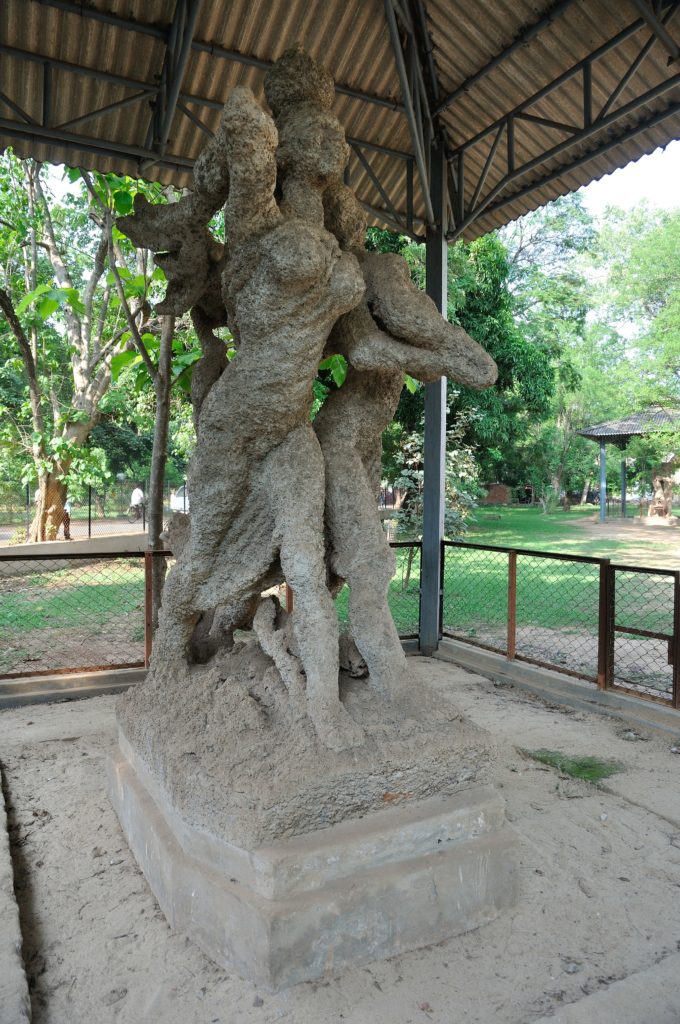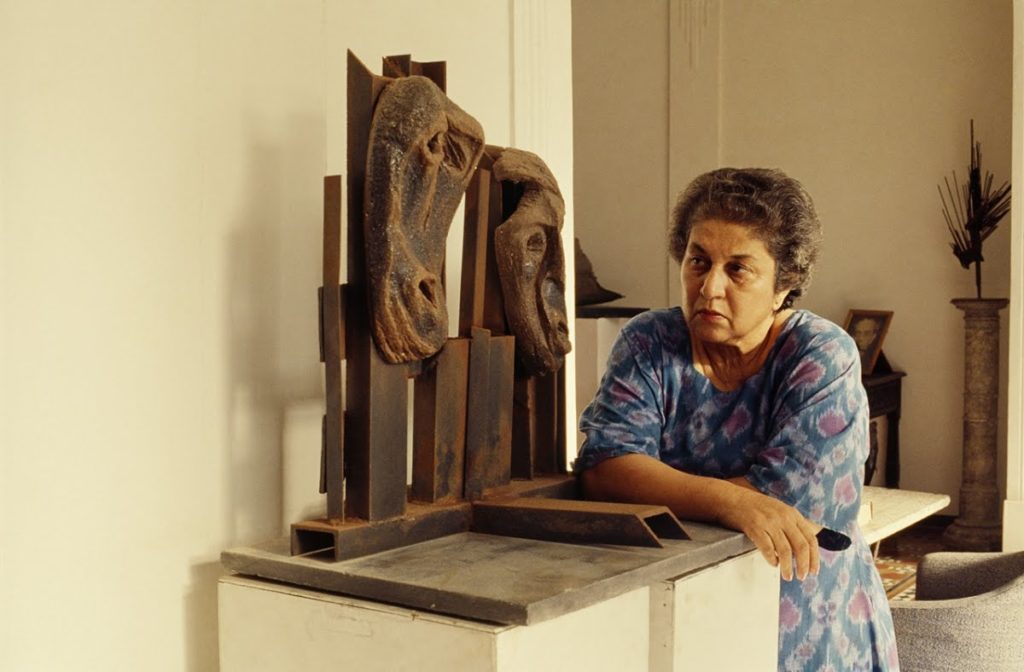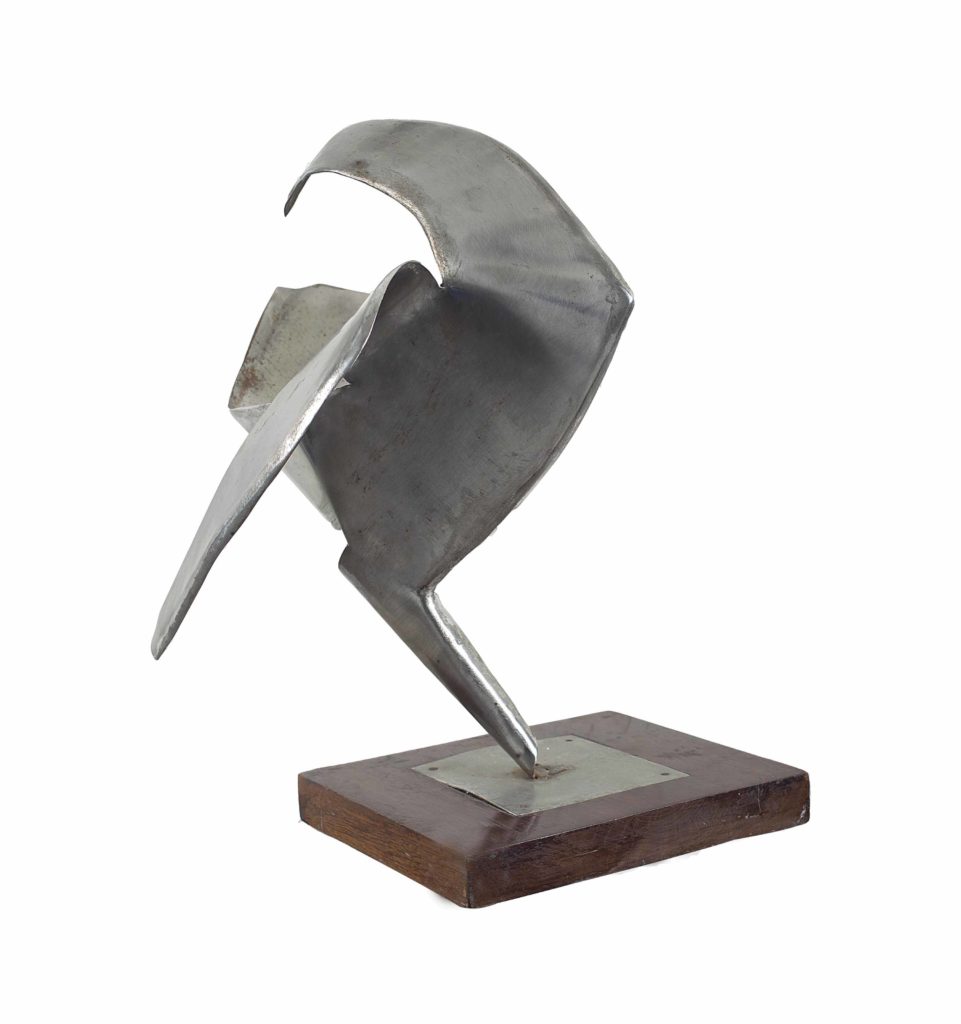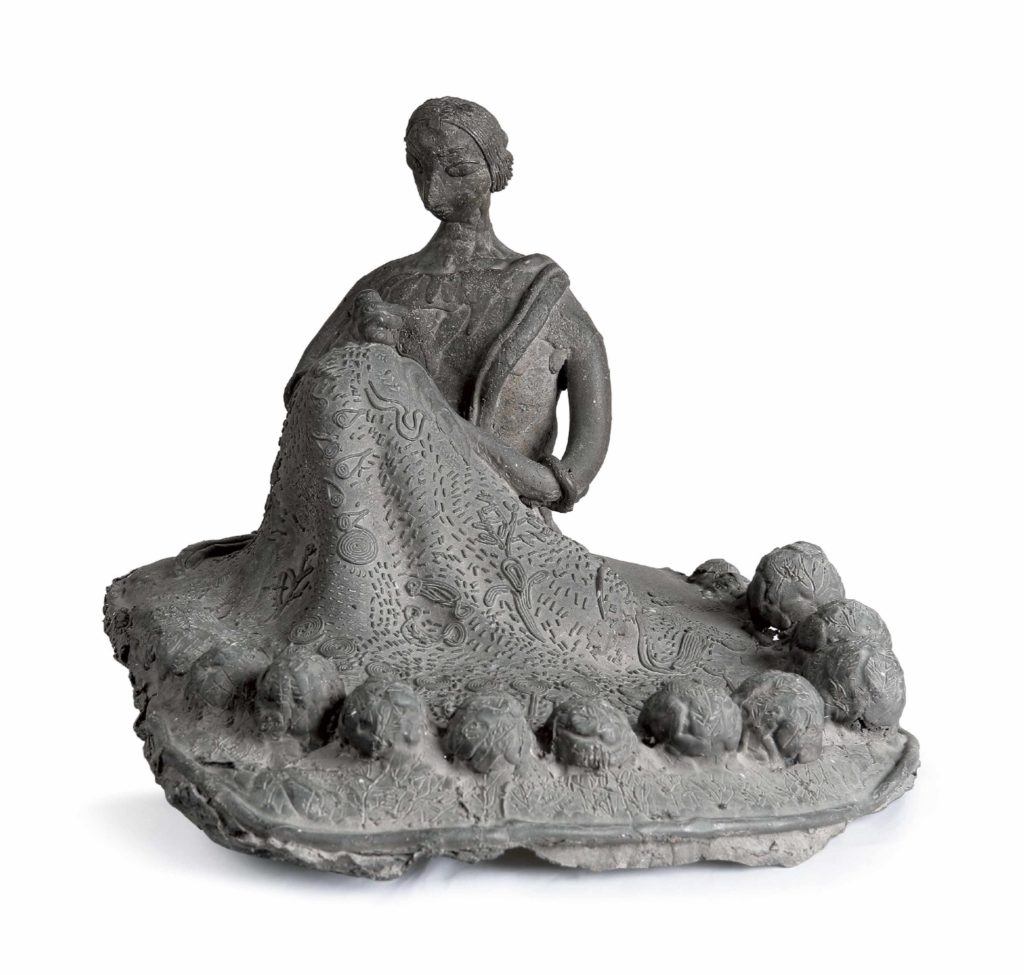Cupid and Psyche: Love Story Through Sculpture
Cupid and Psyche, mythological characters immortalized in Metamorphoses by Apuleius, have been inspiring artists through the centuries. Sculptors...
Valeria Kumekina 14 June 2024
Modernism in India traversed a winding path, bridging ancient and contemporary traditions. Post-colonial art is often referred to as modern art due to the influence of Westernized Abstract Expressionism on many Indian artists.
India became independent from the lawful clutches of the British in 1947. Among the modern artists of the same period, this article mentions the popular five modern Indian sculptors who displayed remarkable oeuvres.

Ramkinkar Baij (1906-1980) was a daring and noble maverick who trusted his instincts. Devoting his entire life to depicting tribal communities, his art delved into the subtle nuances of vibrancy. Awarded the Padma Bhushan award in 1970, he stands as a trailblazer in modern sculpture. As a professor at Kalabhavan, where he worked alongside his contemporaries, including fellow artist Benode Bihari Mukherjee, Ramkinkar Baij diligently infused the campus with a spirit of experimentation.
His works not only provoked, often meeting resistance on various platforms, but also demonstrated the artist’s nonchalant response to such opposition. Ramkinkar Baij employed a variety of regional stones and metals in his art.

Adi Davierwala’s (1922-1975) sculptural installations showcase his inherent interests in science and maths. His lifelong art practice involved creating geometric assemblages through various artistic mediums. As a pharmaceutical chemist and a self-taught artist, his sculptures were marked by a unique fusion of scientific influences and personal experimentation.
Initially, Davierwala began practicing woodworking, receiving fundamental training from N.G. Pasare. Later, he expanded his creative horizons by incorporating stone, marble, and metals into his artistic pursuit.

It’s apparent when comparing her voracious drawings to her flamboyant assemblages that Pilloo Pochkhanawala (1923-1986) deliberately sought to translate her two-dimensional creations into three-dimensional sculptures. A self-taught artist, she uniquely utilized scrap metal as her medium of choice, departing from conventional materials. Her ability to validate her two-dimensional expressions through three-dimensional works, using what some might consider junk, was a testament to her artistic innovation.
Pochkhanawala was a notable woman sculptor during an era when women struggled to secure empowered exposure in the art world. Despite these challenges, she achieved significant recognition by exhibiting her works at multiple venues in India.

What one sees at the first encounter with Sankho Chaudhuri’s (1916-2006) sculptures is an individual attempt at stylization. They are rhythmic and follow a lyrical route, creating an enigmatic loop of visual art. Moreover, they appear to be minimalized, inspired by natural elements that are quotidian yet exceptional in the eyes of the artist. Sankho Chaudhuri was a student of Ramkinkar Baij and had assisted him in Nepal with the work of the War Memorial. It is there that he learned the process of metal casting, by which the majority of his artworks are created.
It is the playfulness while exploring the possibilities of one given medium that fascinates me. But enjoyment or reactions to a given medium or style can never be static, or else it would soon turn the artist into a fossil.
Sankho Chaudhuri

Having been part of the Indian Society of Oriental Art (formed under the aegis of renowned Rabindranath Tagore) from the age of 14, Meera Mukherjee (1923-1998) had already been well-versed in the sense of experimentation. After graduating from the Delhi Polytechnic in Paintings and Graphics, she moved to Germany to study further at the Academy of Fine Arts in Munich. With exposure to Dhokra sculptors in Bastar, Chhatisgarh, India, she solely practiced in three-dimensional forms, for which she became revered. Largely covering quotidian figurines, her sculptures exercise along the dual road of subtlety and ferocity, attributed with an unnerving tactility.
Learn about the modern Indian painters that had been contemporaries to these modern Indian sculptors.
DailyArt Magazine needs your support. Every contribution, however big or small, is very valuable for our future. Thanks to it, we will be able to sustain and grow the Magazine. Thank you for your help!